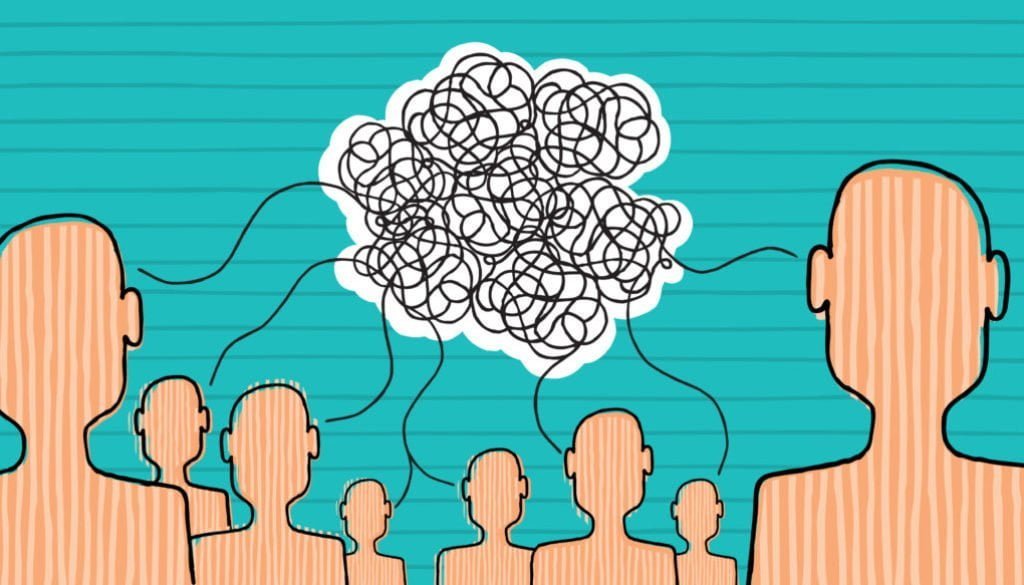Using Stories to Advance Population Health: What Does the Science Tell Us?
Jeff NiederdeppeStories can be powerful tools in population health communication, as evidence from communication science makes clear. But stories are not a panacea. And in some cases, stories risk doing more harm than good. Here are some cautions to consider and a few strategies to help avoid these potential pitfalls.
There has been widespread attention in recent years to the use of storytelling to promote social change. Stories are the “bread and butter” of many forms of public communication, including advocacy, advertising, and journalism. Many organizations that work with health advocates and activists describe storytelling as a uniquely powerful tool for promoting awareness, empathy, and action to address key drivers of population health – the social, economic, and environmental factors that shape access to resources, behavior, and health.
Most of these groups describe stories as a uniquely powerful way to convey the complexities of social issues and promote evidence-based policy solutions among key audiences and decision-makers. But does the science support these claims? Well, yes and no. Evidence from communication science and other disciplines makes clear that stories can indeed be powerful, but they are not a panacea for social change communication. And at times, stories run the risk of doing more harm than good. Here are some key insights from a still-evolving body of research, emphasizing those most relevant to communication about population health issues.
1) Stories can change attitudes and opinions about a variety of topics, including population health.
The evidence on this point is pretty clear: stories can persuade people to think differently about a variety of social issues. Stories are powerful because they present concrete information that is easier to visualize and remember than prose or statistics. Specific to population health, several studies find that personal stories can change how people think about social determinants of health and increase public support for evidence-based policies that target those determinants.
A major caveat is in order, however…
2) Stories do not always offer clear advantages over non-narrative forms of communication about social issues (see also Shen 2015).
Some find that stories work better when communicating with audiences who may be initially opposed to or resistant to the information being conveyed in the study, while other work finds greater effects of stories on those already inclined toward agreement about the topic While the jury is still out on this question, it is clear that well-crafted stories do not outperform good old-fashioned evidence and argument in all cases.
Personal stories also run the risk of some unintended consequences.
3) Personal stories can (unintentionally) invite individual blame and responsibility for social issues.
Strategic storytelling usually focuses on the lives and experiences of one or more individual characters. This is quite helpful if the goal is to promote individual behavior change, but population health tends to emphasize collective solutions that target social problems through policy change. Unfortunately, the mere presence of an individual photo or story can invite audiences to think about socially patterned problems (like obesity) in terms of individual fault (laziness; lack of willpower) and individual solutions (make better decisions), even if the message explicitly makes a case for the need for structural change. Thinking about individual examples appears to (perhaps unconsciously) invite people to think about social problems in terms of individual causes and solutions, even if those portrayals are intended to evoke empathy and collective action.
4) People extrapolate information about the characteristics of social issues from story characters.
Another challenge with personal stories: people overgeneralize from concrete examples. Compelling stories tend to offer vivid and detailed information about a character’s demographics, thoughts, and behaviors in service to the narrative, but this information can lead to broad overgeneralizations about who is affected by population health issues, what caused them, and who is responsible (if anyone) for solving the problem. For instance, if a message about opioid addiction depicts the experience of two White individuals from rural communities, audiences may overestimate the prevalence of the issue among rural, White populations and underestimate the prevalence of the problem in urban areas or among other racial groups. These kinds of misperceptions persist even when the message provides statistical information about the prevalence of an issue.
These are formidable challenges that should remind advocates, researchers, and decision-makers to think very carefully about when it makes sense to use stories to advance population health causes. My collaborators and I have spent considerable time and effort over the past 10 years to improve the science of storytelling for population health. We haven’t uncovered all the answers, but we do think that several factors seem to increase the likelihood that personal stories work as intended to change the way people think about social, economic, and environmental determinants of health.
In our own experience, successful uses of personal stories targeting these goals tend to do each of the following:
(a) Screen (or pre-test) stories with a small subset of the target audience to make sure incidental details don’t convey unintentional messages;
(b) Acknowledge a role for individual behavioral choices and personal responsibility while emphasizing social, economic, and environmental barriers to those choices (See also Niederdeppe 2015 );
(c) Choose individual characters and situations that reflect broader trends and explicitly convey, through words or images, that many other people share the character’s experience (See Scully 2017 and Niederdeppe 2016).
(d) Show (in the story) how an evidence-based policy solution will help both the character and populations at large.
These strategies won’t guarantee success, but in our experience, they tend to increase the chances that stories help advance messages consistent with a population health approach.





All comments will be reviewed and posted if substantive and of general interest to IAPHS readers.